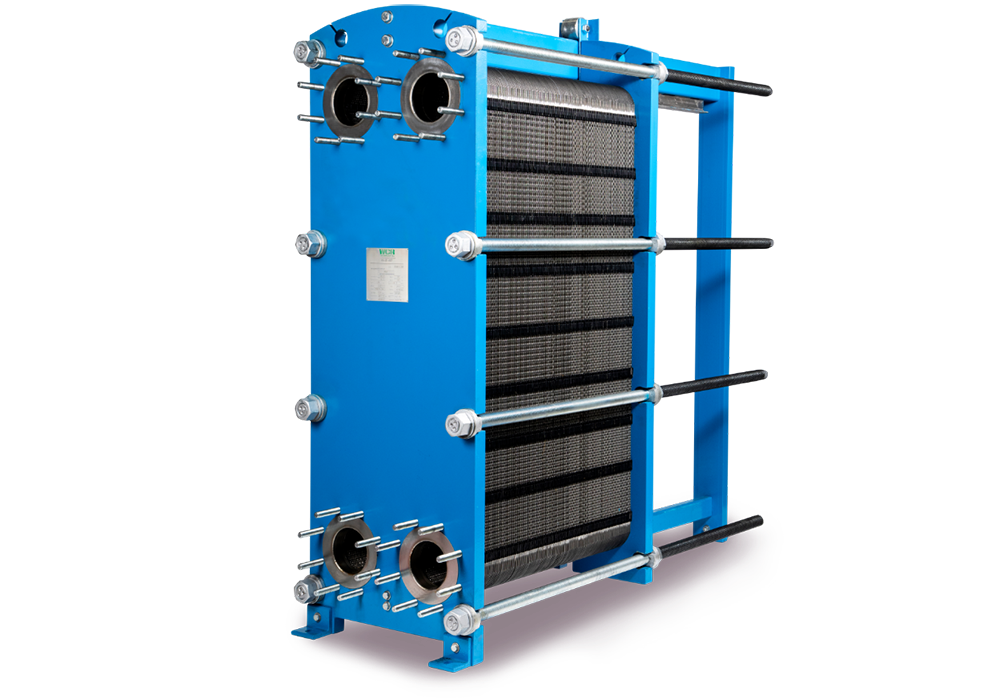Plate Heat Exchangers: Efficient Thermal Energy Conversion Solutions
Plate Heat Exchangers: Efficient Thermal Energy Conversion Solutions
Heat exchangers are indispensable equipment in modern industrial and manufacturing processes. They are used to transfer thermal energy from one fluid to another, facilitating heating, cooling, or energy recovery. Among them, plate heat exchangers stand out as highly efficient thermal exchange devices widely utilized across various industries. This article will delve into the design, working principles, and applications of plate heat exchangers.

Basic Structure and Design Features of Plate Heat Exchangers:
Plates: The main structure of a plate heat exchanger consists of numerous parallel plates, typically made from metal materials such as stainless steel or aluminum. The gaps between the plates form fluid channels.
Modular Design: The plates in this type of heat exchanger can be flexibly assembled to meet different application requirements. This design allows adjustments in the size and performance of the heat exchanger.
High Heat Transfer Efficiency: Small gaps between the plates facilitate efficient heat transfer, thereby enhancing heat transfer efficiency. This high efficiency makes plate heat exchangers highly advantageous for energy conservation and fluid control.
Working Principles of Plate Heat Exchangers:
The operation of plate heat exchangers involves passing two fluids through parallel plates, allowing them to come into contact between the plates. One fluid (known as the heat source fluid) passes through the plates, transferring thermal energy to the plates and then to another fluid (known as the working fluid). In this manner, the heat exchange between the heat source fluid and the working fluid is indirect; they do not mix directly, which is an advantage of this equipment.
Applications of Plate Heat Exchangers:
Chemical Industry: Used for cooling or heating various chemical fluids to ensure control and efficiency in reaction processes.
Food and Beverage Industry: Employed for process heating or cooling to maintain food quality and safety.
HVAC (Heating, Ventilation, and Air Conditioning): Utilized in buildings for heat recovery, cooling, and heating, enhancing energy efficiency.
Energy Production: Used for cooling power plant facilities, such as nuclear and thermal power plants, ensuring the normal operation of equipment.
Conclusion:
Plate heat exchangers are efficient and versatile thermal exchange devices widely used across multiple industries. Their unique structure and design features, such as plate composition, modular design, and high heat transfer efficiency, make them an ideal choice for energy conservation and fluid control. Whether in the chemical industry, food industry, construction sector, or energy production, plate heat exchangers play a crucial role, providing efficient thermal energy conversion solutions for modern processes.

